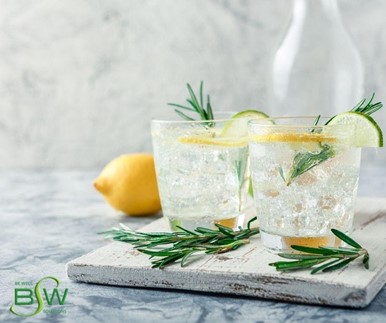How much is too much?
Current CDC guidelines for alcohol consumption recommend less than one drink per day for women and two for men. Trends indicate moderate drinkers are consuming far more than the current guidelines. In the past year, it was found that men averaged four to fourteen drinks per week and women averaged four to seven drinks. There are short and long-term health consequences of consuming too much alcohol.
The Corona Impact
A 2020 study measuring alcohol consumption during the COVID-19 pandemic found that drinking increased amongst 60% of participants (compared to the year prior, 2019). Even before the pandemic, the consumption trends still far exceeded CDC guidelines! In addition to the health consequences this past year had on many individuals, increased alcohol consumption adds to the risks for more health issues.
Risks
Short-term consequences include alcohol poisoning and increased risk of injury, amongst others. Long-term health consequences vary even greater and include cancer, a weakened immune system, cardiovascular health issues, and alcohol use disorder (see Alcohol Abuse versus Alcoholism). In addition, alcoholic drinks are often the culprit of excess calories in the diet, which can lead to unintended weight gain. Individuals drinking alcohol are also more likely to overeat and consume foods that are energy-dense and nutrient-poor. Discovering ways to reduce total consumption is a first step to preventing negative consequences associated with alcohol.
White Claw is not La Croix
It is possible to cut back on alcohol consumption without overhauling your current lifestyle. For instance, first understanding the appropriate portion size for an alcoholic beverage is important because one drink might be considered two or more standard drinks. One standard drink in the U.S. is 0.6-ounces of pure alcohol. This amount can be found in the following beverages:
- 12-ounces of beer (5% alcohol content).
- 8-ounces of malt liquor (7% alcohol content).
- 5-ounces of wine (12% alcohol content).
- 5-ounces of 80-proof distilled spirits or liquor (40% alcohol content).
If your average drink size has been exceeding those amounts, a good first step would be to limit each alcoholic beverage size. Also, be aware of your intake of premade mixed drinks like hard seltzers, lemonade, and sodas which often look and taste like non-alcoholic beverages and are easy ways of consuming over your limits. Creating healthier mixed beverages with your alcohol of choice is a flavorful way to still enjoy your favorite beverage.
At-Home Red Wine Spritzer
For example, a standard pour of red wine is 5-ounces, but if you mix 2.5-ounces with a berry-flavored seltzer water, you cut down on the alcohol content while creating a refreshing beverage. The seltzer water also helps with hydration thereby having the opposite effect of alcohol (a dehydrator). A fun tip is to add frozen berries for a healthier, homemade twist on sangria. Experimenting with various drink options can be a great way to switch up your drink of choice and help you drink less alcohol.
Ingredients (serves 1)
- 5-ounces Pinot Noir or Red Blend wine
- 5-ounces Berry Flavored Seltzer Water
- Frozen Mixed Berries
Make it a Mocktail
If you’re ready to fully eschew alcohol for the evening, consider making a mocktail! There are so many varieties of mocktail options that range from cold to hot, sweet to spicy, and often include fresh ingredients. Create a truly delicious beverage that won’t have you missing the booze. This Spicy Citrus Refresher is a great summer option that combines freshly squeezed orange juice with jalapeños for a spicy kick.
Ingredients (serves 10-12)
- 4 limes
- 7 navel oranges, divided
- 2 small jalapeños, divided
- 1 cup sugar
- ½ tsp. kosher salt
- Club soda (for serving)
Find the full recipe and directions to make this Spicy Citrus Refresher on Bon Appetit’s website.
Drinking less alcohol has many benefits, including consuming less calories, waking up in the morning more refreshed, better sleep habits, and reducing your risks of various chronic diseases. Many of these benefits can be achieved by making small changes to your existing lifestyle so you can still enjoy a few beverages without over consuming alcohol. You just may end up creating a new favorite drink in the process.
*For those struggling to limit or cut back on their alcohol consumption, you may consider seeking out assistance with a drug and alcohol counselor.
Written by Be Well Solutions Dietetic Intern: Maureen Purcell

